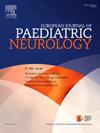新生儿神经代谢紊乱筛查:策略、临床益处和项目扩展的先决条件
IF 2.3
3区 医学
Q3 CLINICAL NEUROLOGY
引用次数: 0
摘要
新生儿筛查(NBS)是罕见疾病(如神经代谢性疾病)二级预防的成功方案,能够早期识别受影响的个体并进行症状前治疗。在高通量测序技术创新的推动下,NBS面板持续增长,并可能在未来进一步扩展。然而,对某种疾病实施国家统计局需要满足各种先决条件,以便最大限度地为受影响的儿童带来好处,同时避免对被筛查的健康人群、其家庭和社会造成伤害。理想情况下,在实施NBS之前,通过长期观察性研究和登记,收集NBS的临床长期获益和早期治疗的数据。此外,国家统计局应作为一项反复评估的公共卫生计划实施,数据收集应伴随着术中长期观察性研究,最好在国际合作中扩展。在这篇综述中,介绍了NBS目前的专业知识,筛选策略和可能的长期临床益处,并讨论了几种神经代谢性疾病,包括丙酸血症和分离的甲基丙二酸血症,同型半胱氨酸尿,再甲基化缺陷,获得性钴胺素(维生素B12)缺乏症,尿素循环障碍,四氢生物蝶呤(BH4)和原发性神经递质障碍,以及溶酶体储存障碍。鉴于这些先决条件,这里讨论的一些神经代谢疾病可能是未来全球NBS计划的一部分。本文章由计算机程序翻译,如有差异,请以英文原文为准。
Newborn screening for neuro-metabolic disorders: Strategies, clinical benefits, and prerequisites for program expansion
Newborn screening (NBS) is a successful program of secondary prevention for rare diseases, such as neuro-metabolic diseases, enabling early identification of affected individuals and pre-symptomatic treatment. Driven by innovations in high-throughput sequencing technologies, NBS panels have continued to grow and will probably be extended further in the future. However, implementing NBS for a disease is subject to various preconditions to maximize the benefit for the affected children, while avoiding harm to the screened healthy cohort, their families and the society. Ideally, data on clinical long-term benefit of NBS and early treatment is collected prior to NBS implementation through long-term observational studies and registries. In addition, NBS should be implemented as an iteratively evaluated public health program and the data collection should be accompanied by intra-operable long-term observational studies, ideally extended in international cooperations. In this review, the current expertise in NBS, the screening strategies and possible long-term clinical benefits are presented and discussed for several neuro-metabolic diseases, including propionic acidemia and isolated methylmalonic acidemias, homocystinurias, remethylation defects, acquired cobalamin (vitamin B12) deficiency, urea cycle disorders, tetrahydrobiopterin (BH4) and primary neurotransmitter disorders, as well as lysosomal storage disorders. Given these prerequisites, several of the neuro-metabolic diseases discussed here might be part of future NBS programs worldwide.
求助全文
通过发布文献求助,成功后即可免费获取论文全文。
去求助
来源期刊
CiteScore
6.30
自引率
3.20%
发文量
115
审稿时长
81 days
期刊介绍:
The European Journal of Paediatric Neurology is the Official Journal of the European Paediatric Neurology Society, successor to the long-established European Federation of Child Neurology Societies.
Under the guidance of a prestigious International editorial board, this multi-disciplinary journal publishes exciting clinical and experimental research in this rapidly expanding field. High quality papers written by leading experts encompass all the major diseases including epilepsy, movement disorders, neuromuscular disorders, neurodegenerative disorders and intellectual disability.
Other exciting highlights include articles on brain imaging and neonatal neurology, and the publication of regularly updated tables relating to the main groups of disorders.

 求助内容:
求助内容: 应助结果提醒方式:
应助结果提醒方式:


